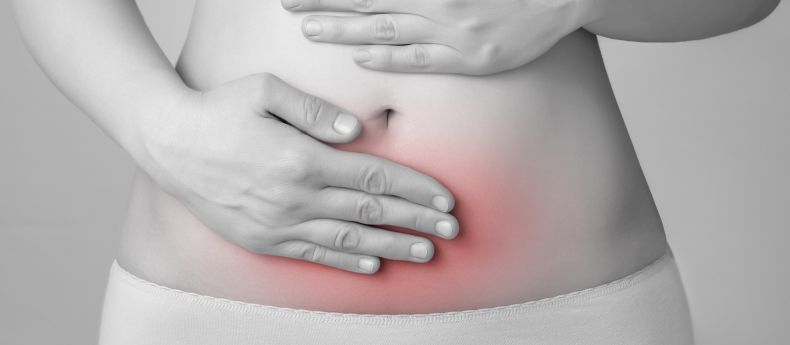
Endometriosis
As the name suggests, endometriosis is a condition affecting the endometrial tissue in the uterus or tissue in the uterine cavity. Recent years have seen an increase in the diagnosis of endometriosis in women, including among elderly women, with around 10% of women currently affected by the condition. Additionally, half of women experiencing infertility have endometriosis, making the disease a concern for women in their childbearing years.
What is endometriosis?
In endometriosis, the tissue that normally lines the inside of the uterus, called the endometrium, ends up outside the uterus, forming lesions (bits of endometrial tissue) on other organs. The parts of the body most commonly affected by the disease are women’s ovaries, uterosacral ligaments and the pelvic peritoneum (the membrane lining the walls of the abdominal and pelvic cavities). Lesions can also be found in the lungs, intestines, and sites of incisions. Endometriosis can cause pain and infertility, with pain often occurring during the menstrual cycle—when endometrial tissues naturally respond to hormonal changes—and resolving on its own when the menstrual cycle is over.
Symptoms and clinical presentation of endometriosis
The main symptoms of endometriosis are pelvic pain and infertility. In the early stages of the disease, many women experience lower abdominal pain during their menstrual cycle. As well, women may experience gradually increasing pain during sexual intercourse, followed by persistent, deep pelvic pain, which may also spread to the genital region. Less commonly, the disease can cause blood to appear in the lungs and stool. Up to 50% of women with endometriosis have irregular periods mainly due to extensive adhesions in their pelvic organs and tissues, leading to ovulation dysfunction.
Diagnosis of endometriosis
Laparoscopic diagnosis is recognized in China and abroad as the gold standard in the diagnosis of endometriosis. With a tiny camera mounted on a tube inserted into the patient’s abdomen through a tiny incision, a gynecologist can see lesions and confirm whether there are endometrial tissues outside the uterus.
From a clinical perspective, without laparoscopic surgery, many patients rely on their personal history, blood tests (CA125) and an ultrasound exam for a diagnosis. Ultrasounds are effective in detecting ovarian lesions sometimes called chocolate cysts. The accuracy when using magnetic resonance imaging (MRI) in the diagnosis of deep pelvic lesions from endometriosis is also relatively high.
Treatment of endometriosis
Doctors can do several things to help women with endometriosis. The main purpose of the treatment of endometriosis is to:
- Reduce or eliminate lesions
- Alleviate and eliminate pain
- Reduce and inhibit recurrence
- Improve and promote fertility
Endometriosis has a high rate of recurrence after treatment, so when considering treatment, each woman and her doctor should take into account the woman’s age, fertility needs, and factors such as the severity of symptoms.
The following types of treatment are available for endometriosis:
Medication therapy
This involves treating the symptoms with pain relievers such as Fenbid, paracetamol, ibuprofen, the Chinese medicine yueyueshu, high progesterone hormone drugs, or hormonal birth control pills. Your doctor will discuss with you the efficacy and side effects of each medication and together help find a treatment plan that is right for you.
Surgical treatment
1. Conservative surgery: Conservative surgery can preserve a woman’s fertility and is suitable for younger women interested in having children. Surgery only involves the excision of lesions and the separation of adhesions between organs.
2. Semi-radical surgery: This type of surgery allows a woman to maintain normal hormone production and involves removing the uterus (hysterectomy) and any other lesions. This type of surgery is generally recommended for younger patients or patients whose endometriosis has seriously progressed.
3. Radical surgery: This surgery involves a full hysterectomy and removal of both ovaries as well as any lesions. This surgery is generally performed for women past menopause or who have had a history of recurring lesions after treatment.
With the gradual rise and development of minimally invasive surgery, minimally invasive surgical techniques have become more widespread in the treatment of endometriosis. Compared with traditional open surgery, laparoscopic surgery is much easier for patients with a quick recovery, few side effects and minimal scarring.
As mentioned above, the screening and treatment of endometriosis must follow individualized programs based on each patient’s specific condition and reproductive needs. To enhance quality of life, whether deciding on surgery or not, all women dealing with endometriosis should choose a reliable medical institution and a doctor skilled in laparoscopic surgery. It is important for women to remember that they do not have to fight the battle of endometriosis alone, and to seek medical attention if they experience any pain or changes that are not normal for them.
Copyright United Family Healthcare 2014 All right reserved - 京卫网审[2014]第1927号 - 京ICP备13017554号-4




